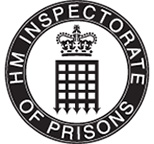Police integrity inspection programme methodology – 2025 onwards
Contents
Print this document
This is the methodology used in our cycle of integrity inspections from 2025 onwards. Please see the 2021/25 integrity programme methodology for the previous cycle.
1. How effectively does the force manage its vetting arrangements for those working in or with policing?
1.1 Does the force manage the vetting of its workforce effectively?
- 1.1.1 The force vetting unit has sufficient governance, capacity, and capability to enable it to effectively manage vetting requirements and anticipated future demand.
- 1.1.2 The force vetting unit knows which roles all officers and staff are working in and regularly reviews the requirements for each vetting level. The force vetting unit can provide assurance that all those who require police vetting have the correct level of vetting for their role and there is a system of continual review and renewal.
- 1.1.3 The force vetting unit assesses risk and makes effective and proportionate vetting decisions, recording a robust rationale. It uses appropriate risk mitigation measures and has a process for working with other force departments to implement, manage and monitor these. And the unit has an effective quality assurance process to review all vetting decisions.
- 1.1.4 The force vetting unit collects and analyses data to identify whether there is disproportionality in its decision-making. If there is disproportionality, the force understands why and makes sure it is addressed. And the unit supports and promotes positive action and force initiatives in respect of all underrepresented groups.
2. How effectively does the force promote high standards of behaviour in its workforce?
2.1 How does the force promote the standards of professional behaviour and organisational learning?
- 2.1.1 The force uses a variety of methods to regularly reinforce the standards of professional behaviour and organisational learning.
- 2.1.2 The force makes sure that its workforce understands the standards of professional behaviour and organisational learning.
- 2.1.3 The force has a clear process for collecting and sharing examples of organisational learning, and has a nominated lead who is responsible for this process.
3. How effectively does the force identify, handle and investigate potential breaches of the standards of professional behaviour?
3.1 Does the professional standards department (PSD) have the capability and capacity to carry out their role?
- 3.1.1 The PSD has enough officers and staff to carry out their work and comply with statutory requirements.
- 3.1.2 The PSD workforce is experienced and trained to an appropriate level so they can carry out their work and comply with statutory requirements.
3.2 Does the force have effective processes and governance arrangements to identify and initially handle potential breaches of the standards of professional behaviour?
- 3.2.1 The force’s initial handling of complaints and allegations complies with statutory requirements.
- 3.2.2 The force documents its PSD systems and processes and makes sure its workforce understands them.
- 3.2.3 The force’s public complaints system is accessible to everyone, including people with protected characteristics and hard-to-reach groups.
3.3 Do the force’s processes and governance arrangements allow it to carry out good-quality investigations and resolve public complaints and conduct matters?
- 3.3.1 The force investigates and resolves complaints and allegations thoroughly and proportionately and in line with statutory requirements.
- 3.3.2 The force documents its PSD systems and processes and makes sure its workforce understands them.
- 3.3.3 The force understands the needs of complainants and makes sure to meet their needs in line with statutory requirements.
3.4 Does the PSD have effective relationships with other force divisions and departments?
- 3.4.1 The PSD works with other divisions and departments including HR, the force training department, vetting and legal services, to make sure relevant information is routinely shared.
- 3.4.2 The PSD routinely considers relevant information that it and other divisions and departments have about the workforce.
4. Does the force hold police officers and staff accountable for their behaviour in a way that is proportionate, fair and consistent?
4.1 Does the force make sure that decisions made about potential misconduct are proportionate, fair and consistent?
- 4.1.1 The force makes sure decisions about potential breaches of the standards of professional behaviour are proportionate, fair and consistent.
5. How effectively does the force protect the information within its IT systems?
5.1 Does the force have the capability and capacity (and appropriate policies in place) to enable it to monitor its own IT systems to prevent and detect misuse?
- 5.1.1 The counter-corruption unit has IT monitoring capability.
- 5.1.2 The counter-corruption unit has IT monitoring capacity. .
- 5.1.3 The force has appropriate policies in place to enable the counter-corruption unit to prevent and detect IT systems misuse.
6. How effectively does the force tackle police corruption and manage corruption-related intelligence?
6.1 Does the counter-corruption unit have sufficient capacity and capability to enable it to tackle corruption effectively?
- 6.1.1 The counter-corruption unit has sufficient capacity to enable it to tackle corruption effectively.
- 6.1.2 The counter-corruption unit has sufficient capability to enable it to tackle corruption effectively.
- 6.1.3 The force recognises abuse of position for a sexual purpose as serious corruption and it trains supervisors to identify warning signs. The force maintains effective working relationships with external agencies and organisations that support vulnerable people and encourage intelligence reporting to safeguard potential victims.
6.2 Does the force manage corruption-related intelligence effectively?
- 6.2.1 The counter-corruption unit collects corruption-related intelligence effectively.
- 6.2.2 The counter-corruption unit assesses corruption-related intelligence effectively.
- 6.2.3 The counter-corruption unit monitors the risk posed by individuals suspected of corruption.
- 6.2.4 The counter-corruption unit takes appropriate action to develop corruption-related intelligence.
6.3 Does the force prevent and detect corruption effectively?
- 6.3.1 The force has effective corruption prevention policies.
- 6.3.2 The force conducts thorough and proportionate corruption investigations.
6.4 Does the force communicate corruption threats effectively?
- 6.4.1 The force communicates corruption threats effectively to its officers and staff.
- 6.4.2 The force engages effectively with other organisations to tackle corruption.
Back to publication
Police integrity inspection programme methodology – 2025 onwards




